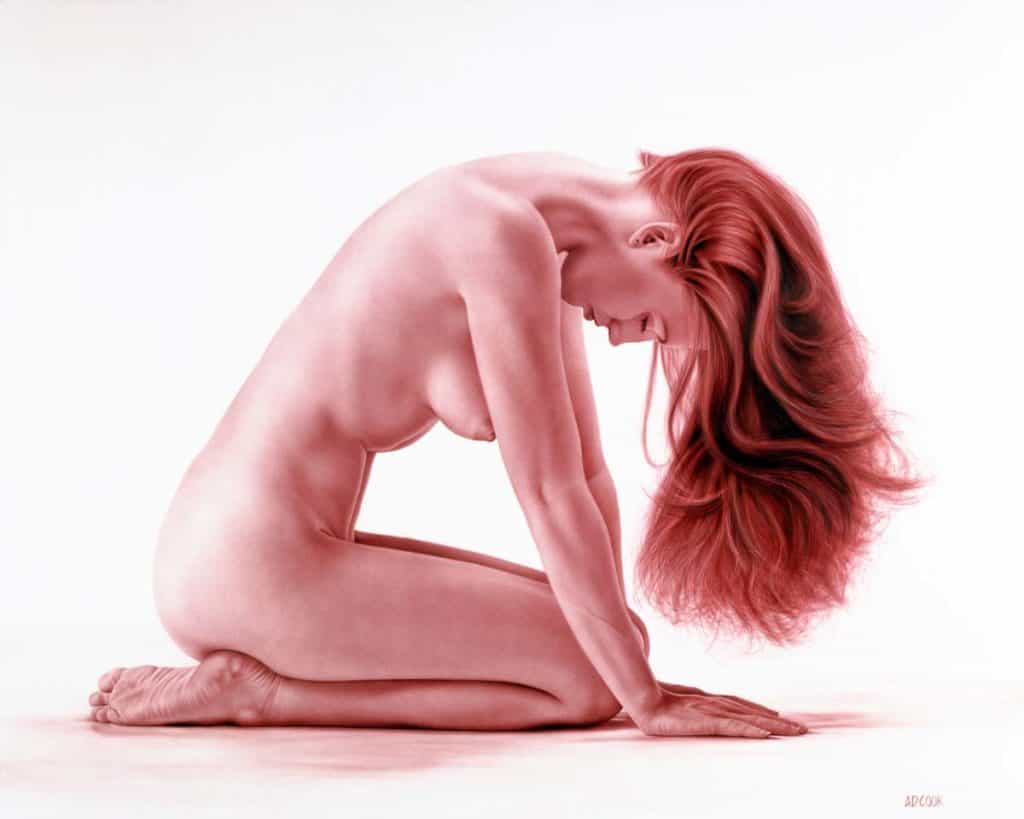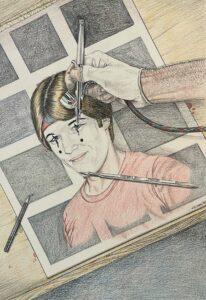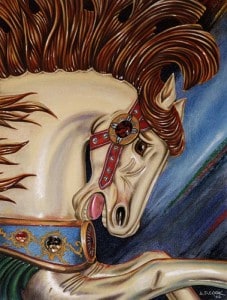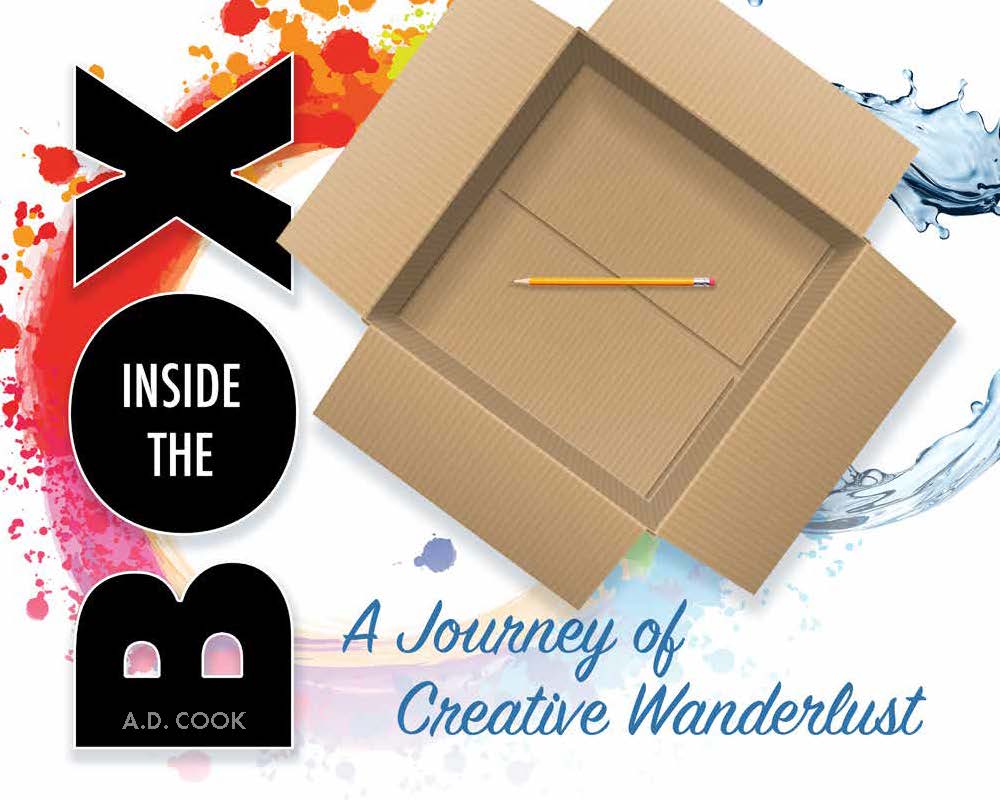
Backdraft, 48″ x 60, acrylic on canvas, 2004
Life is not about how many times one falls. We all fall. What is more important is how many times we get back up. That reality is a truism for life and creativity for everyone alike.
We each have disasters and setbacks that are unique to us. Catastrophes come in so many forms that it would be impossible to list them all. Instead, I shared a few of my art disasters in earlier chapters, which were horrifying then.
Some disasters go beyond the easel. One of my most significant setbacks as a young man happened while playing a friendly afternoon football game with a few buddies. We were all having a great time and enjoying the company of great friends and some competitive exercise. Everything was fine until my teammate threw me a fast pass. As I went to catch the football, it hit my right hand hard, bending my thumb backward and breaking it. My hand didn’t take long to swell up to cartoon proportions.
“Our reaction to a situation literally has the power to change the situation itself.”
— Unknown Tweet
 After reviewing the X-rays, the emergency room doctor asked me what I did for work. I proudly declared, “I’m an artist,” he replied, “You may want to consider another line of work. This break doesn’t look good. Your hand may never function the same after this cast comes off.” His advice could not shatter my dreams of being an artist, not even for a moment. At twenty years old, I was on my creative path, and a day at the park wouldn’t change that, not even a bad day at the park. There was no way I would accept his advice. But, I had options; I could learn to draw left-handed, tape a paintbrush to my hand, or discover a new art form—anything but defeat.
After reviewing the X-rays, the emergency room doctor asked me what I did for work. I proudly declared, “I’m an artist,” he replied, “You may want to consider another line of work. This break doesn’t look good. Your hand may never function the same after this cast comes off.” His advice could not shatter my dreams of being an artist, not even for a moment. At twenty years old, I was on my creative path, and a day at the park wouldn’t change that, not even a bad day at the park. There was no way I would accept his advice. But, I had options; I could learn to draw left-handed, tape a paintbrush to my hand, or discover a new art form—anything but defeat.
I wore that cast for a month and a half and was ecstatic that day it came off. I was relieved when the plaster cast came off to see that my hand looked normal. While I could hardly move it, it looked fine, and that was a start. I could work with that. Next, the doctor recommended therapy, and I asked what that meant. He explained that a therapist would massage my hand and teach me how to use it again. I figured I could do that alone, so I did that. Each day I exercised my hand with a tennis ball, then put pencils and airbrushes in my hand, using my left hand to wrap my fingers around my art tools. It took some effort, but in time my right hand performed like nothing ever happened, but it ruined any dreams of a football career.
TENACITY OVER TIME
 We have all heard that it takes ten thousand hours to be an overnight success. At twenty-four hours a day, that equates to approximately four-hundred-and-seventeen days or about fourteen months. If you devote three hours per day, it will take over thirty-three hundred days or over nine years. If you take a day off here and there, in basic math terms, the average overnight success takes about ten years, plus or minus.
We have all heard that it takes ten thousand hours to be an overnight success. At twenty-four hours a day, that equates to approximately four-hundred-and-seventeen days or about fourteen months. If you devote three hours per day, it will take over thirty-three hundred days or over nine years. If you take a day off here and there, in basic math terms, the average overnight success takes about ten years, plus or minus.
Yikes, that’s a lot of jibberish and fuzzy math, but I think it simply comes down to, “If you want to be good at something, you’ve got to put in the time.” Some things take a lot of time; others, not so much.
Thankfully, not everything takes ten thousand hours. It would be ridiculous to invest that much time learning anything if everything required that level of commitment.
The ten-thousand-hour rule isn’t just for one thing. It’s everything that makes that one thing possible. But unfortunately, in my experience, everything that makes one thing possible takes more time, effort, and energy than the actual thing.
“Success is the ability to go from one failure to another with no loss of enthusiasm.”
— Winston Churchill Tweet
For me, the One Thing is art. Some of the most successful artists I know are in the studio no more than three or four hours a day. The rest of their time is consumed by learning, managing their business, updating their website, writing articles, planning an event or show, meeting with people, and all of life’s other concerns.
The older I get, the more I realize the value of my time. Mistakes are costly and waste valuable time, not to mention the cost of materials and missed deadlines. Then, there’s the frustration of the disaster itself.
Fortunately, today, there are more ways to expedite learning than ever. Through our computers, smartphones, and mobile devices, it’s easier to look up how to do virtually anything and get an instant answer. If you want to know to do something, ask Apple’s Siri or her nemesis, Alexa.
But watching videos is not the same as doing. If I were to attribute anything to my creative successes, it would be effort, tenacity, and countless hours in the studio—more than ten thousand hours over (ahem) several decades.
 I started drawing when I was just a kid, so I had a head start in some ways. From an early age, I started drawing people, cars, airplanes, and whatever else interested me. For me, there was never any question. I knew since first grade that I was going to be an artist.
I started drawing when I was just a kid, so I had a head start in some ways. From an early age, I started drawing people, cars, airplanes, and whatever else interested me. For me, there was never any question. I knew since first grade that I was going to be an artist.
So, given that I’ve created countless artworks over the years, a handful of paintings would be uniquely special to me. But few people ever see the disasters (of which plenty exist). Fortunately, on occasion, I’ve been able to rescue my disastrous artworks, and some of those have become my favorite pieces.
There are more disasters in my creative past than I care to remember, but remembering is the point in many ways. I mentioned a couple of epic tragedies earlier, mainly through my Southwest Pipe and Hollywood Video mural experiences. The following are a few more examples of art disasters and recovery and why I never give up on art.
• • • • •
The story continues in Disaster and Recovery: Part 2,

INSIDE THE BOX
The excerpt above is from INSIDE THE BOX, a forthcoming memoir by A.D. Cook © 2023.
- About the Author
- Latest Posts
- More info
A.D. is an artist who started drawing at a young age. Throughout his life, he has worked with different creative tools in traditional and digital art and design. His art and writings have been showcased in various publications such as Airbrush Action Magazine, Airbrush Magazine, American Art Collector, Art & Beyond, Dream To Launch, Easyriders, Las Vegas City Life, Las Vegas Weekly, L’Vegue, ModelsMania, Quick Throttle, and The Ultimate Airbrush Handbook.




